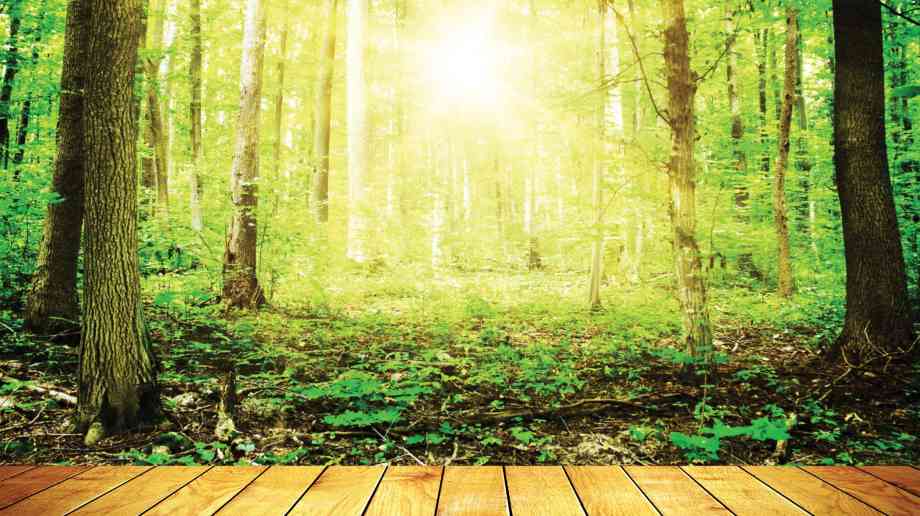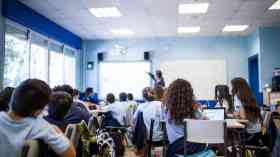
Revitalising the curriculum with the great outdoors
Learning outside of the classroom can breathe life into subjects. So how can you effectively incorporate outdoor learning into the curriculum? Juno Hollyhock from Learning Through Landscapes shares some ideas.
School grounds play a vital role in children’s lives. They’re a space for children to do P.E, a space for community activities, for learning in and about nature, for playing and for festivals and performances. And they’re critical for the health and well-being of our children.
Many children are living in densely populated urban conurbations with little or no access to green space. Access to the natural environment and the chance to play outside is being replaced with indoor, sedentary activity.
This is having an impact on behaviour and attainment as well as on obesity and levels of physical activity. The provision of outdoor space for learning and play at school is essential. But under new rules it’s not required of certain schools to provide outdoor spaces.
Whilst it’s true you can head off-site to study P.E, you’re faced with difficult questions around transportation, risk assessments, staffing ratios, cost of hire and erosion of lesson time. Off site provision is not a solution to schools seeking safe places for their pupils to play and be physically active during break and lunch times. For some pupils the school grounds are the only safe places that they have to be outside, exercise and experience nature.
School Grounds and Learning
Learning outside provides children with a richer, deeper source of experiential teaching and learning. It can inspire and motivate those children for whom classroom learning is inaccessible and challenging.
Learning outside has been proven to improve motivation and attainment and enhances behaviour, concentration and focus when the pupil is back into the classroom, if built into the school curriculum effectively. Teaching and learning in the outdoors is fairly well explored and documented throughout the primary and early years curriculum.
Teaching at secondary level is challenging already with KPIs and intervention strategies, monitoring students’ progress and changes to GCSE frameworks. Going outdoors to learn can feel like an unnecessary addition to a challenging day. However, there are many benefits to learning outside that will subsequently help with indoor teaching and learning, it is just as possible to use outdoor learning to move grade B students to A or A* as it is to get those marginal achievers over the C/D boundary or engage the under-performing Year 7s.
The main difference between teaching and learning outdoors at Key Stage 1/Key Stage 2 and teaching and learning outdoors at Key Stage 3/Key Stage 4 is the need for clearly defined curriculum links that support attainment outcomes.
Taking the curriculum outdoors
With Maths, many children still retain their ability to learn more effectively by ‘doing’ even when they are in KS4, this often applies especially to boys. Using trees, buildings and landscapes for trigonometry and estimation work immediately provides a no cost/no resource reason to get outside.
Small scale construction projects (e.g. building a managed food growing space) provides the opportunity for project management activities. Budgeting, calculating measurements, surface areas and volumes, geometry, estimating amounts of material required, calculating time required and cost effectiveness are all ways in which real contexts assist children with problem solving.
Design and Technology
Resistant materials classes will be very keen to assist Maths with their objective of creating a school grounds installation and can be involved in producing the designed elements of the finished area. Once maths and resistant materials have project managed and created a food growing space into existence then of course there is the opportunity to meet some of the requirements of the food curriculum in understanding where our food comes from.
Space within the school grounds set aside for construction projects like this will allow students to experience some practical learning as they use their design and build skills. These projects can change year on year if necessary, their value is that they provide an on-site mini ‘building site’.
Science
Physical properties and behaviour of matter are much more fun when demonstrated on a large scale. Scientific investigation either of the natural world or of pre-hidden examples of man made objects is also easy and engaging in the school grounds. By using a range of scientific equipment students can apply their knowledge of different properties of materials to identify buried or discovered objects.
Local geological investigation is also enhanced through practical application and, with the right landscaping, opportunities for local ‘digs’ can be built into your school grounds. Building an understanding of soil and soil structures and remediation are also all excellent opportunities to explore your local landscape.
A school grounds landscape that is rich in natural materials and allows students to take and analyse samples will contribute enormously to the delivery of the Science curriculum.
History
In Scotland a programme called ‘Outdoor Journeys’ take students on a tour of their local area and asks them to apply their local knowledge and understanding to broader historical themes to help them understand how local culture and community evolved.
On their journey students pose and answer questions about the human and the economical journey and story of the landscape they are passing through. One way to begin to use your locality as a catalyst for historical enquiry based learning is by taking students outside to an appropriate point and asking them to guess the ages of the different buildings that they can see.
Landscapes that offer viewing points of the local area and that provide spaces for observation and recording will support this.
English
Using the outdoors and the natural environment in particular is a great way to provide inspiration for creative writing projects as well as giving new ways of exploring elements of literature.
For example, physic gardens, either planted in your school grounds can be a great way to learn about the importance of plants in the writing of some of our great authors. Shakespeare made great use of plant derived poison in many of his tragedies. The use of labyrinths for the contemplative exploration of ideas and reflection can inspire a deeper level of thinking on a subject. Labyrinths can be large scale and landscaped in or they can be created by the students.
Being outdoors provides a far wider range of multi-sensory experiences than can be reproduced in the classroom, this gives much fuel for poetry and descriptive prose and creates a deeper and more meaningful context to creative works. School grounds that are rich in multi-sensory experience and beauty will offer a wealth of resource for the creative writing aspect of the curriculum.
Journeys in and around the school grounds can give the context for a story line or narrative, school grounds that have been landscaped to offer a variety of different, interesting spaces rather than a uniform tarmac expanse will add to the creative possibilities of your site.
Expressive Arts
The rise and rise of flash-mobs as a form of artistic expression shows us the impact of scale and environment on this kind of activity. Most performances can be re‑formatted to a dynamic outdoor installation which gives students the chance for public performance and the experience of managing unpredictable environments.
Versatile performance space built into the landscape design can offer a large scale stage for students to work in, even small grassy amphitheatres can be used in a multiplicity of ways. Static art installations are a very powerful way of students having impact on, and ownership of, their school grounds, small plinths and hidden corners can offer ideal display opportunities.
Further Information
www.ltl.org.uk
Latest News
14/11/2025 - 11:04
England’s councils are warning of a "ticking time bomb" in the special educational needs and disabilities (SEND) system, with new data showing deficits that could bankrupt local authorities within three years.
13/11/2025 - 12:14
Event for school leaders, governors and education professionals relocates to the historic Old Billingsgate venue in London.
13/11/2025 - 09:49
The regulations have been set following a second consultation and detailed collaborative working with organisations and people across deaf and hearing communities.
13/11/2025 - 09:39
The Education Committee has published a letter to the Secretary of State for Education asking for more detail about the Department for Education’s work on developing its SEND reforms.
13/11/2025 - 09:26
New analysis by NFER has highlighted the uneven distribution of pupils with special educational needs and disabilities (SEND) across mainstream schools in England.







